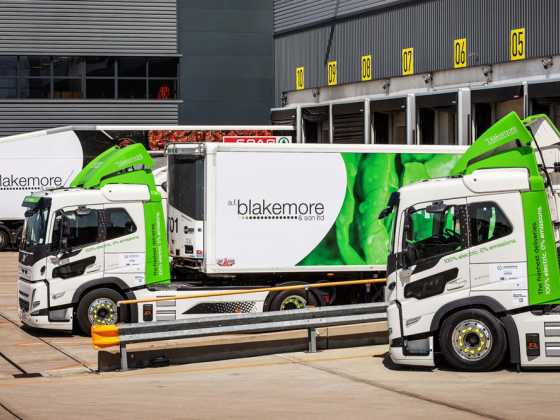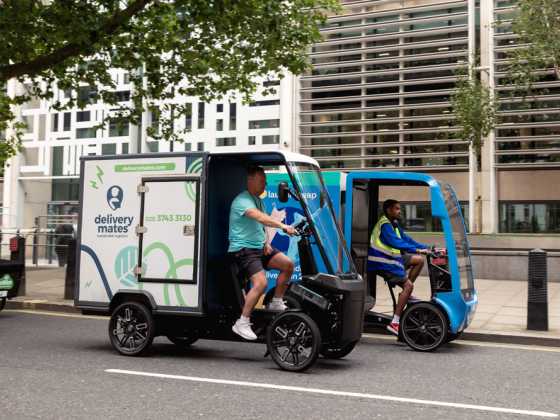Where next for insurance telematics?
GreenFleet examines the current state of insurance telematics, the scope for future development and the potential benefits for drivers
 Usage-based insurance (UBI) is gradually changing the shape of automotive insurance. While currently occupying a relatively small space within the market, UBI has the capability to become a significant disruptor in vehicle insurance, with added value services and smartphone connectivity beginning to make these policies more attractive and easier to access for a lot of UK drivers.
Usage-based insurance (UBI) is gradually changing the shape of automotive insurance. While currently occupying a relatively small space within the market, UBI has the capability to become a significant disruptor in vehicle insurance, with added value services and smartphone connectivity beginning to make these policies more attractive and easier to access for a lot of UK drivers.
At a basic level, UBI works through a telematics device within a car that is capable of recording the drivers’ habits, such as breaking, speed and cornering, which then allows insurers to evaluate the insurance cost on a individual basis.
It is easy to see how this could benefit insurance companies, who can increase the price for those deemed unsafe drivers, but there have been a lot of questions regarding whether this technology will pose any substantial benefits for drivers themselves.
User-based insurance
Traditionally, a UBI device is installed within a car and connected to the on-board diagnostics port. The immediate benefit for drivers is that they can be rewarded for their good driving with a lower insurance rate.
However, the systems offer a number of benefits above and beyond this. Possibly the most prevalent advantage is a shift in claims handling, which has benefits for both insurers and drivers. Telematics lead to a reduction in fraud, optimise costs and allow for more accurate pricing of claims. This is all extremely beneficial for insurers, but doesn’t have too much direct upside for drivers.
However, UBI also leads to a large reduction in the time it takes to settle claims. Telematics systems have the capability to provide automatic crash notification and so allow insurers to proactively initiate the claims management process. This allows a claim to be logged almost immediately, and the insurers response to be much more tailored to a customers needs. This means an insurer can notify the customer of where to fix their car or get a replacement vehicle in a very short turn around after an accident, which will reduce wasted time and could potentially save money for business fleets.
This immediate data exchange also speeds up the claims process, meaning claims will be processed more efficiently and drivers will not have to waste as much time waiting to find out if their claims has been approved or waiting for compensation.
Mobile apps
There has been an increase in telematics‑based mobile apps, which could make accessing UBI much easier for drivers. These apps work by using a smartphone’s motion sensors to record acceleration, deceleration and distance covered to provide a user profile in a similar way to the ODB‑connected systems.
The benefit of these systems is that they may be able to increase uptake among drivers, as it eliminates a major drawback of UBI, in that installing ODM‑connected boxes can be costly for the insurers and also time consuming for drivers, who have to book and allocate a time for someone to come and install the box in their vehicle. For a fleet manager in charge of a number of vehicles, this has the potential to become a big time burden.
These apps also have the capability to become increasingly personalised, with features notifying drivers of their behaviour over a trip and offering tips for improving their driving.
However, there is some opposition regarding the use of smartphones for telematics purposes. Firstly, as they are not connected to the car, there is no guarantee that the apps will be able to record all trips. A smartphone may be unable to record a trip if the driver forgets the phone or it runs out of battery. This raises a lot of concerns regarding reliability and the accuracy of recorded data, which is extremely important for developing a driver profile a personalised insurance rate. It also leaves scope for drivers to manipulate the data by turning off the device when it suits them to do so, which is a concern for insurers.
Building on this, filtering appears to be a big hurdle in the wider roll out of telematics mobile apps, as the a phone needs to know if the user is driving a car, riding a car, or possibly using public transport.
Additionally, mobile apps can also be a drain in the phone’s battery, which makes it a less practical option and can compound the problem of unreliable data if a phone runs out part way through a journey.
Apps have the capability to make the process much easier and more accessible, and as the technology becomes more advanced it is likely they will play a much bigger part in the roll out of UBI. However, current concerns will need to be addressed before they become a large scale viable option. Some companies are beginning to offer mobile app based UBI policies, but it is important to consider the potential downsides before selecting this kind of insurance.
Added value
Another big factor in increasing the uptake of UBI is the ‘added value’ insurance providers can offer customers. Indeed, insurance companies may need to stop thinking along the lines of an insurance company, and think more like a service provider.
This added value that telematics has the ability to offer could be the unique selling point that convinces drivers to adopt a telematics‑based insurance policy over a more traditional one, and is likely to be a key factor in UBI policies moving forward.
A vehicle with an on-board system can offer a variety of safety benefits. A telematics system connected to the OBD port can immediately alert an insurance company in the event of an accident or breakdown. This information will then allow an insurance company to contact roadside assistance or emergency services, which becomes especially important in the event a driver is knocked unconscious and unable to make the call themselves.
Additionally, cars fitted with an on-board system can also be more easily tracked through GPS technology. This allows insurers to offer further capability to customers to track and recover stolen vehicles. This kind of service is already on offer from a small number of companies, which can offer web portals for users to track the exact whereabouts of their vehicle, as well as other features such as reviewing recent journeys and even monitoring battery voltage.
It is likely that more insurance providers will start to offer additional features and services with UBI moving into the future, providing added benefits for the user on top of potential cost savings.
Privacy concerns
A possible development of this technology is that insurance companies could sell data from in-vehicle telematics devices to business that want to reach policyholders with coupons or promotional materials.
User specific adverts are not a new concept and are fast becoming commonplace in the increasingly connected modern world. Companies such as Google and Facebook utilise this kind of marketing strategy to tailor online adverts and suggestions based on people’s browsing habits. Data recorded from telematics devices could be used to provide updates on information such as when car owners may need to purchase a new battery, or monitor a driver’s location in relation to specific retail outlets. Tailored adverts could then be sent to a car’s infotainment system or a connected smartphone device, building on this information and even linking to a users smartphone history to provide tailored deals and adverts.
This kind of value added feature could prove profitable for insurance companies, but also could add to the growing concerns over the ‘big brother’ view on telematics. While users could benefit from tailored adverts and deals that save them money, many may not wish for their details to be shared and have privacy concerns over the idea of insurance companies being able to track their every move.
It is likely that UBI will play an increasingly important role in motor insurance, as the benefits for insurance companies make it their prerogative to promote such technology. However, there are a host of benefits for the driver as well. These benefits are expected to greatly increase in the near future, offering a wide range of services in addition to UBI policies, which will likely outweigh privacy concerns as insurance telematics sees a more widespread roll out.
Further information
www.greenfleet.net






